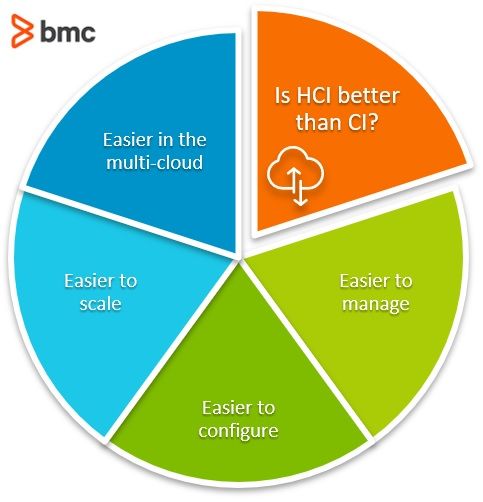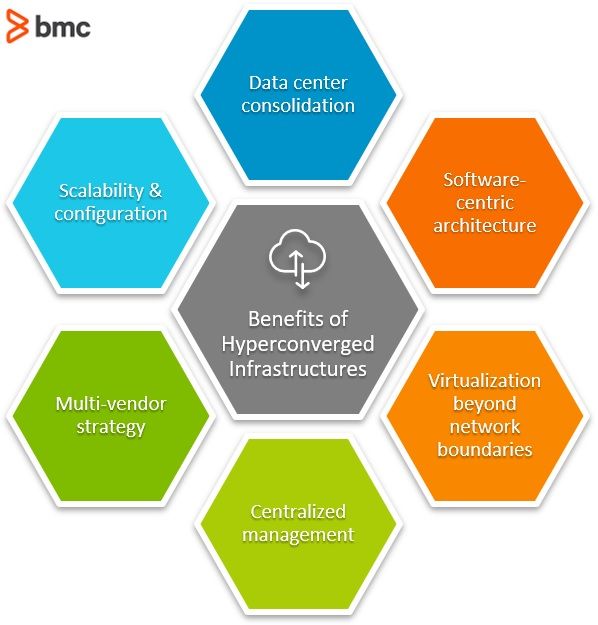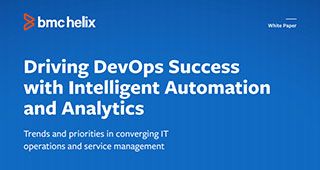Hyperconverged infrastructure (HCI) is a paradigm shift in data center technologies that aims to:
- Reduce infrastructure complexity
- Enhance scalability
- Enable a truly software-defined IT infrastructure environment
Organizations using on-premise infrastructure struggle to optimize data center capacity and performance, especially when traditional virtualization mechanisms lead to unmanageable, complex, and under-optimized resource islands.
Introducing HCIs to your organization is an opportunity to massively expand what IT can do for an enterprise. Scalability becomes easier. Downtime can be reduced to an absolute minimum through intelligent design.
This is achieved through the use of separate servers, storage networks, and storage arrays. Hyperconverged design makes use of cloud technology to deliver a completely software-driven platform that brings many benefits to any business, as we’ll see below.
Investment in convergence has increased exponentially. Recent research pegs the market at $11.69 billion in 2023 and projects a growth of 23.5% by 2030. This rapid growth is driven by a growing awareness of HCI infrastructure benefits like scalability and flexibility, increased investment in digital transformation initiatives, and the ongoing need for data security and disaster recovery.
So, what’s the buzz all about? In this article, we’ll look at:
What is hyperconverged infrastructure (HCI)?
HCI is an IT framework that involves virtualizing all the hardware elements in a conventional data center environment. This allows you to centrally manage the integrated infrastructure resources within a software-defined architecture.
Using commercial off-the-shelf servers, virtualization is applied to:
- Computing
- Storage
- Wider network resources
Hyperconverged infrastructure solutions are designed to bring economic and performance advantages to data centers. With HCI, a private data center can now operate as a scalable, high-performance, reliable, and always available cloud-like infrastructure.
(Learn more about software-driven data centers, or SDDCs.)
What’s “hyper” about HCI?
The “hyper” in the name can be a little misleading. HCI isn’t necessarily better than a converged infrastructure (CI). However, for large, virtual machine (VM)-oriented companies, HCI can:
- Improve efficiency
- Practically eliminate downtime
- Make scalability as easy as sending an email
CI is the hardware-based approach to infrastructure. It still simplifies data center management, but it is built by using hardware to bring multiple business processes together.
These processes work like hardware building blocks—each component can be separated and reverted to a more traditional model.
HCI is “hyper” because everything is software-defined. As all technology is completely integrated, it cannot be broken down into separate components. This means that when you commit to the software-based approach, reverting can be difficult.

Is HCI better than a regular CI?
Generally speaking, if HCI is regarded as better than a regular converted infrastructure, it’s for these reasons:
- Easier configuration. With the traditional converged infrastructure, the underlying elements of the virtualized system are preconfigured, prepackaged, and bundled into a single virtualized system. To meet the operational requirements of different workloads, these systems must be re-configured, optimized, and protected.
- Easier management. Convergence only facilitates the purchase and upgrade cycles while the technical problems associated with the infrastructure remain unsolved. From an end-user perspective, HCI offers seamless management and integration of the infrastructure components with minimal user intervention.
- Easier elasticity. The resulting VM-centric operations make the data center more elastic to meet varying business demands, help protect data amid fault-prone infrastructure operations, and ensure high IT service availability.
- Easier multi-vendor approaches. HCI relies on using compute, storage, and networking devices as virtualized, software-centric, and integrated commodities that may be supported by multiple vendors. This allows for a multi-cloud strategy within your infrastructure.
(Read our full comparison of CIs and HCIs.)
Is hyperconverged IT infrastructure right for my company?
Hyperconvergence is an innovation.
By applying the principles of virtualization and convergence to discrete elements of the infrastructure individually, not as a prepackaged or bundled product, we create opportunities for new data center concepts.
The processing, networking, storage and other hardware resources are federated and can be provisioned, managed, and configured automatically within a software-defined and virtualized environment.
Software technologies can dynamically provision the functionality of the underlying infrastructure resources to different workloads and apps as required. As a result, the hardware resources can be pushed to their maximum to support:
- Scalability
- Security
- Cost efficiency
Benefits of hyperconverged infrastructure
By now, the value of HCI might already be clear. Here are the most common benefits organizations see when moving to hyperconvergence:

Data center consolidation
HCI lets organizations replace monolithic storage and networking environments with consolidated infrastructure resources to make the most of their data center investments.
Data center consolidation enables centralized management through automated software, which:
- Reduces the complexity for IT managers
- Simplifies the network architecture
This capability is crucial in scaling the infrastructure effectively. Organizations can increase system capacity by adding nodes to the existing HCI system without individually applying the configuration, security, and management protocols for every hardware or device.
Software-centric architecture
With software-defined infrastructure operations, policies that govern workload processes aren’t tied to specific underlying infrastructure hardware components.
That means you don’t have to reconfigure your policies every time the workload moves between data center storage instances or when adding new hardware. The software-centric design ensures that the policies are defined and maintained at the abstracted software level of a consolidated infrastructure, instead of being tied with individual hardware products.
This software-centric design means organizations can leverage automation capabilities to manage, protect, and scale the infrastructure in response to varying workload requirements.
Virtualization beyond network boundaries
HCI removes the barriers that emerge due to traditional virtualization methodologies.
The integrated compute, storage, and network systems operate as modular components that can be added to scale out the infrastructure.
Unlike converged infrastructure, where storage is tied to the hardware components, the hyperconverged infrastructure may distribute the storage controller functionality across the infrastructure nodes as a software service.
The mechanism of software-defined storage configures the entire pool of storage resources available within a virtualized environment. As a result, storage management functionality is simplified and can be applied to the entire infrastructure as an automated software-driven process.
Centralized management
For infrastructure systems operating a distributed data plane, and virtual machines (VMs) or container-based apps running compute, storage, and networking across a cluster of nodes, HCI offers a single and unified management plane.
Unlike traditional converged or standard virtualized infrastructure deployments, you don’t need individual management consoles for different hardware or virtualized resources.
While the nodes continue to operate as individual federated systems, the infrastructure and data management operations are standardized across the aggregated resources and controlled within a single, unified user interface (UI).
Common use cases for hyperconverged infrastructure
The ability to support high-performing, simplified, scalable, and efficient IT solutions in a single system is driving the adoption of hyperconverged infrastructure. Businesses can reduce their costs, speed innovation, and enjoy greater agility. Example use cases include:
- Remote or Branch Offices (ROBO): A smaller footprint serves small locations with high availability and high performance without the big infrastructure overhead.
- Virtual Desktop Infrastructure (VDI): Users enjoy a consistent and responsive experience that’s efficient and secure to deploy and scale as needed.
- Data center management: Managing data center resources is easier with centralized and automated infrastructure that minimizes overhead and reduces downtime.
- Test/Dev environments: Users can provision and scale quickly for agile development cycles that speed innovation.
- Data analytics: High-performance scalability supports fast access to data and smooth resource allocation for changing workloads.
- Secondary backup or disaster recovery: Built-in backup and recovery capabilities minimize the complexity of business continuity readiness.
What HCI means for your business
To thrive in our fast-growing, connected, and data-driven economy, the IT infrastructure powering your products and services must offer high agility, scalability, and flexibility to address fast-evolving market needs.
With a converged infrastructure, organizations can:
- Leverage the software layer to use low-cost commodity hardware
- Reduce concerns about vendor lock-in
Centralized management and infrastructure-wide integration of system resources controlled from a single pane of glass console makes the job easier for IT security and management personnel.
With the resulting improvements, IT can respond to changing business needs faster. A single administrative umbrella can be used to control infrastructure scale-out, workload migration, and other key IT operations that otherwise bottleneck the pace of product development and release cycles.
Market trends suggest that HCI will continue to attract IT spending as organizations seek the technology solution as a next logical step toward radical improvements in virtualized, converged, and software-driven infrastructure environments.







